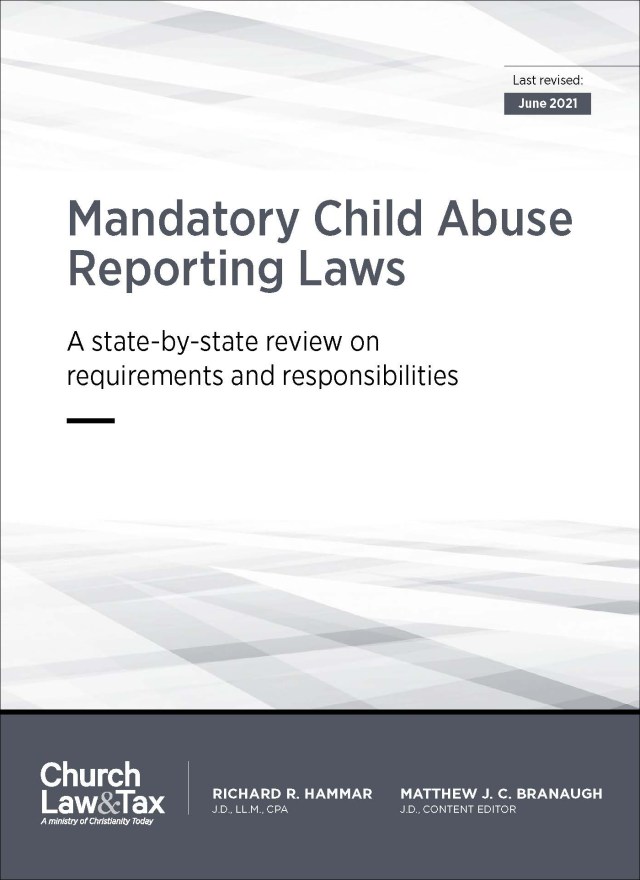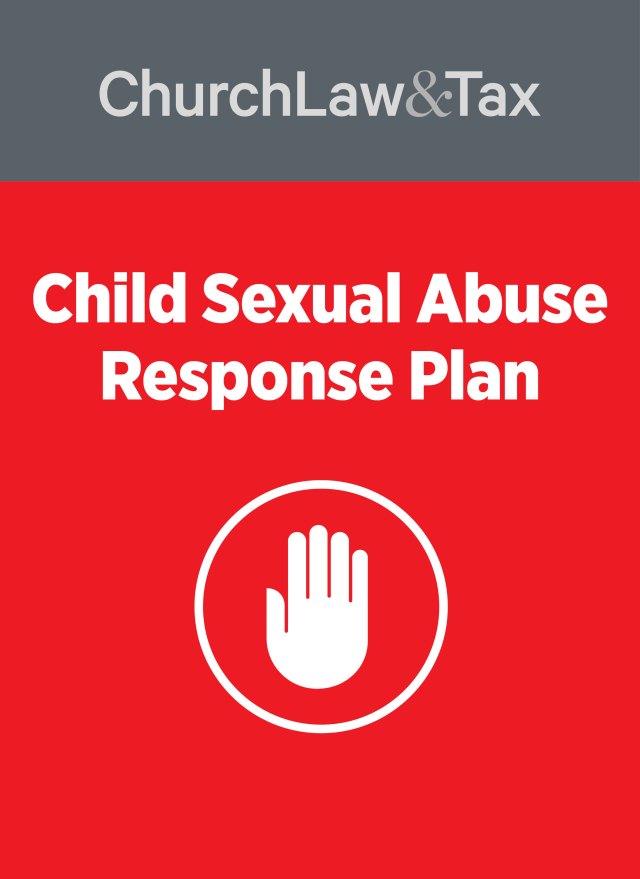• Key point. Minors who are sexually molested by church workers may not sue their church after the statute of limitations has expired. Generally, the statute of limitations begins to run on a minor’s 18th birthday. In some states the statute of limitations is suspended if a church “actively conceals” the basis for a lawsuit from a victim. This may occur if church leaders fail to comply with child abuse reporting requirements under state law.
• Key point.. Minors who are sexually molested by church workers may not sue their church after the statute of limitations has expired. Generally, the statute of limitations begins to run on a minor’s 18th birthday. In some states the statute of limitations does not begin to run until an adult survivor of child sexual molestation “discovers” that he or she has experienced physical or emotional suffering as a result of the molestation. Other states do not recognize this so-called “discovery rule.”
A Kentucky court ruled that an adult who had been sexually molested as a minor by a teacher at a parochial school could sue the diocese that operated the school for negligent hiring, supervision, and retention. A boy (the “victim”) attended a parochial school for five years. On several occasions during that time he was molested by a teacher. The victim never reported the incidents nor discussed them with anyone until 1992 (when he was 32 years old), due to feelings of shame and embarrassment. In 1992, the victim learned from television reports that the teacher had sexually abused other students. These reports brought back memories of his own abuse, and he was hospitalized three days for emotional trauma several months after the programs aired. The programs also prompted him to have several conversations with the diocese concerning the incidents and how they could have occurred. A criminal investigation resulted in the teacher being arrested and convicted of twenty-eight counts of sexual abuse of minors, as well as the filing of several civil suits by the victim and others. The victim filed his suit against the teacher and diocese in 1993. He alleged that the teacher sexually assaulted him and that the diocese negligently hired, supervised, and retained the teacher.
While the lawsuit was pending, the trial court ordered the diocese to turn over the teacher’s personnel file which contained information of a sensitive nature. The files revealed that the diocese had received reports of the teacher sexually abusing students at its schools prior to the time the victim attended school. In the early 1960’s, the teacher was sent out-of-state for a period of four years after reports of sexual abuse surfaced. Upon his return, the bishop placed him back in the diocese’s schools, despite the bishop’s expressing concerns in his correspondence that the teacher’s pedophilia had not been cured and that he would continue to be “a problem.” The diocese received additional reports of sexual assaults of students by the teacher in the late 1960’s and early 1970’s. Other than transferring his residence, the diocese did not discipline or sanction the teacher, did not inform other students, parents, or employees, and did not report the incidents to state authorities.
The diocese asked the trial court to dismiss the lawsuit on the ground that it was barred by the statute of limitations. The court declined to do so, and the case proceeded to trial. A jury awarded the victim $50,000 in compensatory damages and $700,000 in punitive damages, and it apportioned fault seventy-five percent to the diocese and twenty-five percent to the teacher. The diocese appealed, arguing that the victim’s lawsuit was barred by the statute of limitations since it had been brought some 17 years after the teacher’s last act of molestation. The victim insisted that his lawsuit was filed on time due to the “discovery rule,” and the fact that the diocese “fraudulently concealed” relevant information.
Discovery Rule
Kentucky law specifies that a personal injury action must be commenced within one year “after the cause of action accrued.” Generally, a cause of action is said to accrue when the injury occurs. However, in certain cases, a cause of action does not necessarily accrue when the injury occurs, but rather when the plaintiff first discovers the injury or should have reasonably discovered it. However, the discovery rule has been applied only in cases involving medical malpractice or exposure to harmful substances. The court declined to apply it to repressed memories of child molestation. It noted that the victim had not alleged memory loss but was well aware of his injury.
Fraudulent Concealment
Kentucky law specifies that the statute of limitations is extended during the time that one party through concealment or otherwise “obstructs the prosecution” of the lawsuit. The victim claimed that the diocese should be barred from relying on the statute of limitations due to its failure to report the teacher’s multiple acts of child abuse to the authorities, as well as its failure to inform students, faculty, and staff of the teacher’s behavior. The diocese vigorously disagreed. It insisted that concealment alone is not enough to suspend the statute of limitations. Rather, the concealment must mislead or deceive the plaintiff so that he or she is lulled into inaction or is otherwise obstructed from investigating or instituting a lawsuit during the limitations period.
The court noted that the diocese knew prior to the time when the victim was abused that the teacher had sexually abused students and would continue to be “a problem” and continued to receive reports of his sexually abusing students during at least part of the time period in which the victim was being abused. Nevertheless, the diocese took no action to discipline or sanction him, to inform other students, parents, or employees, or to report the incidents to state authorities. The information was kept secret and confidential in a personnel file, and the victim had no idea that the diocese had prior knowledge of the teacher’s propensities until 1992. Until that time, the victim neither knew nor had reason to know that he had a potential cause of action against the diocese for causing injury to him due to its concealment of its knowledge of the teacher’s actions toward other students. The court concluded: “The diocese clearly obstructed the prosecution of [the victim’s] cause of action against it by continually concealing the fact that it had knowledge of [the teacher’s] problem well before the time [the victim] was abused as well as the fact that it continued to receive reports of sexual abuse of other students during part of the time period in which [the victim] was abused. Furthermore, where the law imposes a duty of disclosure, a failure of disclosure may constitute concealment … . ” The child abuse reporting statute in effect when these incidents occurred imposed a legal duty on “any person” to report child abuse to law enforcement authorities. The diocese failed to comply with this duty, “and such failure constitutes evidence of concealment.”
The court rejected the claim of the diocese that the jury erred in awarding $700,000 in punitive damages against it. Kentucky law provides that “[a] plaintiff shall recover punitive damages only upon proving, by clear and convincing evidence, that the defendant from whom such damages are sought acted toward the plaintiff with oppression, fraud or malice.” The diocese argues that by the plain language of the statute, punitive damages are available only upon a showing that it acted with fraud, malice, or oppression toward the victim and that there was no evidence that it acted in this manner since it had no way of knowing that the teacher had abused the victim or would likely do so. The court rejected this argument.
The court rejected the victim’s argument that the jury erred in apportioning fault between the diocese (75%) and teacher (25%). He insisted that in the case of an intentional tort, such as child molestation, no apportionment is required. The court disagreed. It noted that with the adoption of comparative fault, defendants cannot be liable for more than the degree of fault apportioned to them by the jury. The court saw no reason to deviate from this principle because an intentional wrong was involved.
Application. This case is important for two reasons. First, it illustrates the legal risks that are assumed by a church that ignores the dangerous propensities of a volunteer or employee. By failing to discipline or sanction the offender, or warn other students, parents, or employees, a church may be found liable on the basis of negligent retention or negligent supervision for the worker’s future acts of sexual misconduct. Also, the church’s failure to act may greatly extend the statute of limitations, meaning that victims may sue the church many years after they were molested. These are very serious consequences.
A second aspect of the court’s ruling that will be of interest to church leaders was the conclusion that the statute of limitations may be suspended if church leaders fail to report known or reasonably suspected incidents of child abuse. Let’s illustrate this with an example. Assume that the pastor and board of a church are mandatory child abuse reporters under state law, and that they learn that a church worker has abused a 10-year-old child during a church activity. Rather than report the abuse to the authorities, the pastor and board decide to handle the matter “internally”. Assume further that the statute of limitations for injuries to minors is two years-beginning on their eighteenth birthday. This means that a minor who is sexually abused must file a lawsuit by his or her twentieth birthday. However, this deadline is “suspended,” perhaps for many years, if the church failed to report the abuse as required by state law. This is another potentially serious risk that church leaders face when a decision is made not to report child abuse. Roman Catholic Diocese v. Secter, 966 S.W.2d 286 (Ky. App. 1998). [Negligence as a Basis for Liability, Denominational Liability]
© Copyright 1999 by Church Law & Tax Report. All rights reserved. This publication is designed to provide accurate and authoritative information in regard to the subject matter covered. It is provided with the understanding that the publisher is not engaged in rendering legal, accounting, or other professional service. If legal advice or other expert assistance is required, the services of a competent professional person should be sought. Church Law & Tax Report, PO Box 1098, Matthews, NC 28106. Reference Code: m67 m65 m40 c0299


